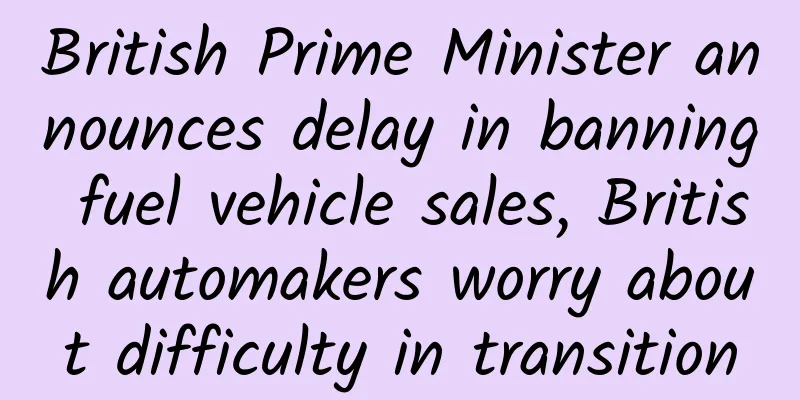Fold up the small table, open the sunshade...Why are there so many "strange" rules when flying?

|
Compared to taking a train or a car, taking a plane is much more troublesome. Not only are the inspections much stricter, but there are also various regulations attached: power banks cannot be checked in, mobile phones must be switched to flight mode, sun visors must be opened, small tables must be folded, etc. These regulations make many people feel "troublesome", but they have no choice but to cooperate. Why do we have to go through all those safety regulations when we take a flight? Are they really necessary? Source: pexels 1 Strictly regulated electronic products We know that electronic products are subject to strict inspection and requirements from boarding inspection to the entire flight process. This is mainly reflected in two aspects: 1. Lithium batteries are not allowed to be checked in Lithium batteries are mainly used in mobile phones, laptops, power banks, backup power supplies, small household appliances and other products, and have a wide range of applications. According to regulations, all products with lithium batteries are not allowed to be checked in and can only be carried by individuals. Because the checked cargo space is closed, the temperature and air pressure are unstable during the flight. Lithium batteries are prone to spontaneous combustion or even explosion due to squeezing and collision. It is difficult to be discovered in time in the cargo hold, which seriously threatens the safety of the aircraft and personnel. Therefore, unless you have an urgent need, try not to carry too many products containing lithium batteries on the plane. Source: China Eastern Airlines official website service guide What we carry with us in our daily lives are basically mobile phones and power banks. For power banks, they must meet the standards before they can be carried. China's Civil Aviation Administration stipulates that power banks with a rated energy of no more than 100Wh (20,000 mAh) can be carried on board aircraft, and power banks between 100Wh and 160Wh (32,000 mAh) must be approved by the airline and no more than two can be carried, and power banks with a rated energy of more than 160Wh are not allowed to be carried. Source: pexels 2. The communication device must be in flight mode Nowadays, the ban on turning off mobile phones on airplanes has been lifted, and some airplanes have also set up in-flight WiFi for passengers to use. However, since the use of electronic products will connect to data, there is a small possibility of causing signal interference to the aircraft. Therefore, on the plane, especially during takeoff and landing, the flight attendants will still require passengers to turn on the flight mode, and communication products that do not have the flight mode are required to be turned off. Source: Xinhuanet 2 Liquids with volume restrictions When people pack their luggage, they will have a lot of cosmetics and toiletries to carry with them. Facing all these bottles and jars, it is inevitable that they will have a headache. Can these liquids be brought on the plane? Most daily chemical liquids can be carried, but they need to be opened for inspection and there are volume restrictions. According to the "Notice of the Civil Aviation Administration of China on Restrictions on Carrying Liquids on Civil Aviation Aircraft", when passengers take international and domestic flights, liquids in their luggage must comply with the following regulations: • Liquid items should be placed in single containers not exceeding 100ml and need to be opened for inspection and carried with you • Liquid containers must be placed in a resealable transparent plastic bag no larger than 1L • Passengers are only allowed to bring one plastic bag at a time Source: Zhihu • Liquid items exceeding the limit must be checked in • Cosmetics, toothpaste and shaving cream required for travel within 100m l• When taking civil aviation flights within China, alcoholic beverages are not allowed to be carried on board, but can be checked in. It should be noted that 100ml does not refer to the volume of the liquid, but the volume of the container. Even if your shampoo is only 10ml, but it is in a 500ml bottle, you cannot carry it. Source|See watermark There are two main reasons why there are strict restrictions on the carrying of liquid items: first, the composition of liquid items is unknown and they may contain flammable and volatile substances , which will react to the environment at high altitudes; second, it is to prevent criminals from carrying liquid explosives and endangering flight safety. 3 Those "strange" regulations In addition to meeting the various carry-on restrictions during security checks, you also need to comply with some rules when flying. For example, wearing seat belts is generally understood. After all, whether you are flying, on a high-speed train, or in a car, wearing seat belts is the most important safety protection. In the event of an accident, it can reduce the impact of accidental collisions on the body and ensure the safety of passengers to the greatest extent. However, other regulations are a bit confusing. The following editor will explain them one by one. 1. Open the sunshade As the name suggests, the sun visor blocks the sun's rays and can reduce some ultraviolet rays during level flight. The sun visor needs to be opened during takeoff and landing so that passengers and crew members can observe the situation outside the aircraft and respond in time . When encountering an emergency and passengers need to leave the plane, not only can people outside the plane observe the situation inside the aircraft through the window, but it can also allow passengers to adapt to the outdoor light in advance. Source: pexels 2. Straighten the seat back Adjusting the seats backwards at will will cause the aisle of the rear seats to be too narrow, which may delay the escape of the rear passengers in the event of an accident. Some friends may also find that some seats cannot be adjusted. There may be exits behind these seats. This design is to ensure that passengers can escape smoothly in an emergency . 3. Fold the tray table Similarly, folding the small tables and chairs is also to ensure that passengers have enough space to escape when an accident occurs, to prevent accidental collisions. The above three requirements are all during the take-off and landing phases of the aircraft. The reason is that these two phases are the time periods when safety accidents are prone to occur on the aircraft, so passengers must strictly comply with them. Source: pexels After reading this, do you understand why airlines have made these regulations? Although the probability of aircraft safety accidents is relatively low now, these regulations are lessons learned from many accidents in the past. As passengers, when we enjoy aviation flights, for the sake of our own and others' lives, we should abide by the regulations and not take chances. |
>>: Why doesn't it rain diamonds on Earth?
Recommend
Why does WeChat limit the time to withdraw a message to 2 minutes? Can't we give it a few more minutes? The answer is not simple
[[418841]] As the ancients said, "Once a wor...
The same family, different fates! These two sea elves not only look weird, but also look alike!
For the survival and continuation of the species,...
BlackBerry Classic, a nostalgic phone that bids farewell to an era
10 months ago, when BlackBerry released Passport,...
What treasures have humans unearthed in the past 200 years? Just look at this picture
For more than 200 years, There are countless impo...
Bosch invests $1.1 billion in a new chip factory to manufacture chips for future smart cars
Bosch provides many components to automakers, fro...
Editor Liu's 21-lesson writing training camp teaches you how to improve your reading and writing skills
Editor-in-Chief Liu's 21-lesson writing train...
The tariff barrier is leaking. The EU is imposing tariffs on Chinese electric vehicles with its left hand, while quietly loosening restrictions on Volkswagen and BMW with its right hand.
The EU's imposition of tariffs on Chinese-mad...
Amadeus: 2022 Q2 Travel Market Insights Report
Global car rental bookings continued to show doub...
After relying on the metaverse, can VR, AR and even cloud games really take off?
"As long as you have authority, people will ...
“Guide to Eating Out Safely” Series: Will your stomach agree to eating barbecue?
Although barbecue is delicious, it poses certain ...
Why should you chew slowly when eating? You will understand after reading this
When eating in the cafeteria, do you have one or ...
"Great Beauty, Smart Economy"! BYD's second-generation Song Pro DM-i and Hiace 05DM-i, the national SUV, lead the new trend of A-class SUV
On September 23, the Hiace 05DM-i and the second-...
Variety shows usher in a hodgepodge era. How can we make delicious dishes when there is a lack of differentiation?
In the past two years, following the trend of var...
Promotion tips: How to define new users?
In our product operation practice, the definition...
When you have no money and no resources, how can you get your core fans to actively spread the word for you?
Lai Chunjuan, Marketing Director of App Center, i...









